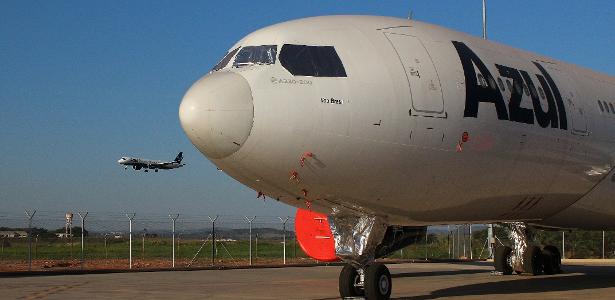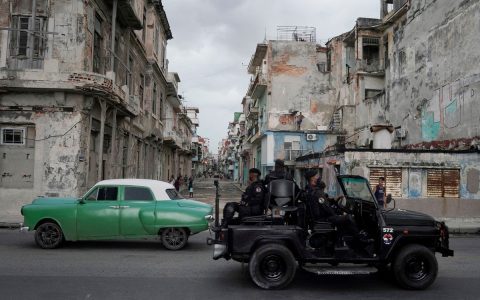
Commercial aircraft had been idle for months during the pandemic. Now that travel is making a comeback, the question remains: Is it safe to fly in equipment that has long been idle? How is the maintenance done? And pilots, do they need to be recycled?
In 2020, at the start of the crisis as a result of COVID-19, about 16,000 commercial aircraft took off (two-thirds of the world’s fleet). At the end of 2020, 30% of the fleet was still on the ground, mainly large passenger aircraft, such as the Airbus A380 and Boeing 747. To preserve these aircraft, a series of procedures had to be carried out.
cover the hole against insects and animals
When an aircraft has not taken off for a while, it is important that its entrances, such as the engine nozzle, landing gear compartment, among other holes, are covered.
This is to protect the aircraft from the ingress of water, dirt, insects and other animals that seek shelter in these places, which can cause serious damage.
Depending on how long an aircraft will last without flight, it must undergo a type of protection: active or passive.
start the engine from time to time
On active duty, the aircraft does not fly, but is periodically activated to ensure that it remains operational.
In this situation, for example, the engine is started at idle every few days, the aircraft is turned so that the wheel turns and, among other issues, to ensure the proper functioning of the entire aircraft. Don’t be in the middle ,
In passive protection, it may be necessary to remove the battery, fuel and some fluid from the aircraft, among other measures, because in these conditions, the aircraft would have to be inactive for long months.
are with the planes after the return
These are situations where aircraft are usually sent to aircraft graveyards, where they remain for months, years, or never fly again, turning into scrap after a certain amount of time.
Generally, it is not necessary to replace components because they have been stopped, but, before restarting the aircraft, the most sensitive items are checked according to the manufacturer’s manual.
Nevertheless, in airlines, after returning to operations, aircraft are monitored for a few days to ensure that their parameters are the same and within normal limits.
Process can take weeks
When protection is inactive, planes are practically asleep. In these situations, in order to make them fly again, it is necessary to conduct a more detailed and comprehensive analysis of many objects that would not need to be inspected under active protection.
In these situations, the tires need to be re-calibrated, the engine and other systems have to be lubricated or the oil level has to go up.
Many systems, both electrical, hydraulic and mechanical, need to be retested to make sure everything is operating normally.
If necessary, necessary adjustments and replacement of parts can be made, along with other maintenance. This process can take weeks and even months if parts have to be taken off.
plane cemetery
In the United States, commercial aviation began its recovery months after the start of the pandemic, and most aircraft were briefly grounded, undergoing active protection. Some aircraft, however, remained in the aircraft cemetery until recently.
There are many such places around the world. Most of them are in the United States, but there are cemeteries in Australia, France and Spain.
Perhaps the term graveyard is not always the most appropriate, although planes are destroyed in these places when their useful lives come to an end. In terms of protection, when it is expected to fly again, it will be like a long-term parking lot.
In general, these cemeteries are located in desert regions, such as the Mojave (California) and Marana (Arizona), both in the Americas, or among themselves, in Australia.
This is because the low humidity helps reduce the problems that airplanes can develop over time, and helps with protection.
Retake in Brazil
In Brazil, Azul, Gol and Latam had to close most of their operations in the first months after the pandemic. In all, 333 aircraft of these companies were to be protected, 120 from Azul, 92 from Government of India and 121 from Latam.
Today, only two aircraft undergo the active conservation process at Azul and six in Latam. The Indian government did not report updated figures.
Since this process requires less maintenance for aircraft to return to flight, it becomes more agile in terms of reopening routes.
Pilots also need recycling
It’s not just aircraft that have to follow special rules in order to fly again. This is also true of the on-board crew. According to the ANAC (National Civil Aviation Agency), pilots must meet minimum requirements to fly after being out of action for a long period of time.
A commercial airline pilot will be able to fly only if he has made at least three landings and three take-offs on the type of aircraft he operates in the last 90 days.
If you do not meet these requirements, you will have to perform these steps in an advanced simulator, where you will have to act out an engine failure and an instrument landing, for example.
Watch a little more about how airplane conservation works, starting in 2020, in the video below:




